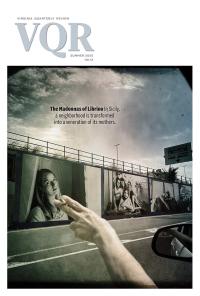
Fine-Tuning
In late January, a few days after President Trump’s inauguration, I attended a conference titled “Covering the Chaos,” hosted by Switchyard magazine in Tulsa, Oklahoma. (Switchyard’s editor, Ted Genoways, was formerly the editor of this magazine, where he reshaped its mission to include investigative journalism.) The event brought together a few dozen writers and editors who had covered the first Trump administration, and it offered us a chance to discuss what strategies and values might best serve us moving forward as advocates for a public seeking out the truth.
That weekend in Tulsa was a marathon of unflinching conversations, point-blank arguments, soul-searching, wisdom, and plenty of vulnerability. It was dizzying work, and deeply satisfying because it wasn’t just a weekend of hand-wringing by discontented liberal media types. Instead, we tackled our own biases and paid meticulous attention to how to keep the tools of empathy sharp enough to deliver work that prioritizes individuals over institutions or ideologies; that calls out abuses of power, governmental or corporate; that bears witness and seeks to be clear-eyed about the overwhelming complexities and contradictions of the human experience today.
I took particular interest in what seemed, amid conversations about policies and echo chambers, like a wild-card concern: What role does beauty play in this endeavor? To take that question just a bit further: How can such an effete concern benefit writers and readers at a time when reliable information alone is such an endangered commodity? When a country is going off the democratic rails? What good is beauty to a house on fire?
This question about beauty came up during a panel on literary approaches to journalism, but its consideration was less about rendering pretty things than it was about a frequency of attention, of practicing the kind of humility that allows writers to catch and assemble the fleeting details that accumulate into something that transcends mere facts. This appreciation of beauty as a thing to take seriously resonated with me, and it dovetailed neatly with a powerful feature in this issue.
In her book Emerald Drifters, from which her portfolio for this issue is excerpted, photographer Cig Harvey mounts a full-throated defense of beauty as an existential must. “Secretly, we all strive for beauty in art and our lives,” she writes, “but it is best not to talk about it.… If we bring up beauty, we seem shallow, uninterested in politics and the world’s injustices.” The misguided assumption of intellectualism or advocacy is that “if we welcome and nourish beauty, how can we respond to injustice?”
For Harvey, the answer is that beauty—to create it, or capture it, or simply to give it space amid the frenetic hostility of our time—can be a form of affirmation and resistance. “We know beauty and justice are entangled: both are concerned with harmony and balance.”
Finding beauty in any reporting endeavor, then, isn’t so much about adornment as it is committing fully to the practice of staying attuned—to the nuances of individuals we write about, or the symmetry between opposing forces. To stay open to what’s beautiful is simply to prioritize a particular alertness to the world, which has as much a place in journalism as poetry.
